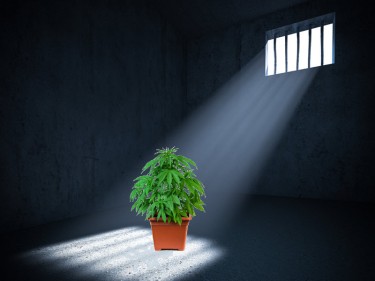
What is the fading of your cannabis plants and why should you do it?
Mother Nature has been extremely kind to the cannabis industry, and when it comes to fading, nobody does it better than her. Fading your cannabis is an artistic process, especially when the plants are bottle fed, so all growers need to know how to do it properly.
In addition to the help you can get from Mother Nature, this article also provides the most effective and practical tips to fade your cannabis this growing season.
Don’t panic about the process.
When growers panic about the growing process, it leads to errors and mistakes in the process that cause harm to the plants. Sometimes panic begins when you fear that your plants will fade too soon and your fears are legitimate, but panic is not a good response to such worries.
The tendency for plants to fade depends on specific genetic abilities at which it is efficient or not. The amount of food the plant receives from the soil or surrounding water is a critical factor. The environment also plays a crucial role as hotter places make the plant grow with a higher metabolism, which means higher water and nutrient consumption.
If you are a seasoned breeder with years of experience, you will agree that panic at the earliest stage of fading will not help. If you are using living soil with no bottled organic nutrients, and not changing the water or planting environment, your plants will decide of their own needs.
When it’s time to fade you will find the plant slowly fading and that’s a good sign: so don’t panic!
Use PPM
This is an important tip as you can initiate the fading process and control its speed with the PPM levels in your marijuana water. Fading your marijuana doesn’t get any easier, especially when everything is stable, from nutrients to water.
You will get more impressive results if you do not overuse your plants with liquid nutrients. You can do this sparingly and the fading will still occur.
Another great tip regarding PPM is to have your plants run on the water while it’s at 64 PPM: do this within two or three weeks of harvesting the plants. Make sure to lower the PPM of the water to around 50 PPM as the harvest approaches.
This movement puts the plants into a “New Mode” in which they use stored nutrients to make up for any lost nutrients (the PPM value). So just cut off your regular water with distilled water or some other low PPM water source to get the PPM you want for the last two weeks of harvest. If you want, you can also reduce your individual water.
Take into account the temperatures, humidity and light distance.
All three of the above are essential to bleaching your plant: They are all vital individually and in combination. When you have convincing lighting, you may want to take targeted control of the plant environment that is exposed to the light.
You can also slow down the fading process by making sure the humidity is above 40% when the light is 3 or 4 degrees lower than what is available on a daily basis. Remember to increase the light distance by 6 inches as these are efforts that can slow down the fading process.
It’s okay for the plant to fade and cannibalize itself at the beginning of flowering. Watch the plants closely to observe their rate of fading and progression. You will know that the fading starts successfully when it hits the leaves first, then the center and lower segments of the plant.
If you allow your plants to cannabilize early enough, you will create a path for additional lights to penetrate deep into the canopy, resulting in even better secondary growth yields. This method gives you more impressive products per plant, and you can expect this to begin around four weeks before harvest.
irrigation
Each grower’s watering habits can either favor or detract from the fading process. If your plants are suffering from drought stress, they may appear limp from lack of watering, which shouldn’t be a “serious” problem. But when the plants look so lifeless and still don’t get water in time, it could become a problem.
In the second part of the flowering phase, you should be even more careful. As if plants had drought stress within ten days, they can switch to “burst mode”.
In this mode, the plants quickly use up their stored nutrients, which can cause them to become hermaphrodites. So what’s the solution? Maintain a consistent watering routine, especially in the final stages of flowering if you are growing in containers.
You want to secure your water properly: not too much and not too little. Overwatering your marijuana plants can create additional problems, but if you have well-designed containers to grow your plants in, watering problems will be minimal.
Yes, your marijuana plants need water to fade, but no, they don’t need to be soaked in water. Interestingly, proper watering of the flowering phase can position your cannabis plant well enough for Mother Nature to handle the process.
Bottom line
If you are growing cannabis, owning green marijuana plants at harvest time does not mean you will have a “good” yield. The fading process involves reducing the plant’s nutrients during oil production. With fading, you don’t have to starve the plant for nutrients; You just reduce it to the bare minimum before harvest time.
It does this because the quality of the derived product after fading is enormous. If your plant nutrient balance is wrong or overfed, you won’t see much of a difference as this works best with healthy plants.
But excellent fading requires paying attention to certain details, and this article has shown you some of the most effective ways to perfect your fading process.
Every cannabis grower wants healthy yields and a profitable planting experience. Use these tips to get your cannabis fade right and your profitability wish will come true.
GROWTH TIPS AND TRICKS, READ THESE …

HOW TO DETECT LIGHT BURNS ON YOUR CANNABIS PLANT LEAVES!
OR..

LIGHT DEP CROPS AND HOW TO SET UP YOUR LOW-TECH GROW!

Post a comment: